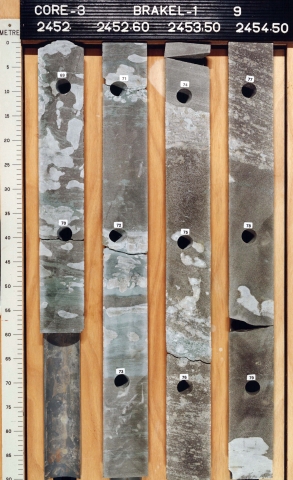Code
RBMDC
Status
Formal (NAM & RGD 1980).
Lithological description
Homogeneous, slightly silty, anhydritic claystone sequence.
Depositional setting
Predominantly lacustrine (Ames & Farfan 1996).
Definition of lower boundary
Not yet determined.
Definition of upper boundary
Not yet determined.
Thickness indication
Up to 98 m.
Geographical distribution
Regional correlation
UK: Bunter Sandstone Formation; GER: Detfurth Formation; BEL: Detfurth Formation.
Age
Olenekian.
Holostratotype
Well:
Depth (thickness) AH:
4009 - 4033 m (24 m)
Parastratotype
Well:
Depth (thickness) AH:
2748 - 2783 m (35 m)
Origin of name
None.
Previous name(s)
None.
Reviewed by (date)
Johan ten Veen (2017)
References
Ames, R. & Farfan, P.F. 1996. The environment of deposition of the Triassic Main Buntsandstein Formation in the P and Q quadrants, offshore the Netherlands. In: Rondeel, H.E., Batjes, D.A.J. & Nieuwenhuijs, W.H. (eds): Geology of gas and oil under the Netherlands. Kluwer (Dordrecht). 167–178.
NAM & RGD 1980. Stratigraphic nomenclature of The Netherlands. Verhandelingen van het Koninklijk Nederlands Geologisch Mijnbouwkundig Genootschap 32, 77 p.
Van Adrichem Boogaert, H.A. & Kouwe, W.F.P. 1994. Stratigraphic nomenclature of The Netherlands; revision and update by RGD and NOGEPA, Section E, Triassic. Mededelingen Rijks Geologische Dienst, 50, 1-28.
Cite as
TNO-GDN ([YEAR]). Detfurth Claystone Member. In: Stratigraphic Nomenclature of the Netherlands, TNO – Geological Survey of the Netherlands. Accessed on [DATE] from http://acc.dinoloket.nl/en/stratigraphic-nomenclature/detfurth-claystone-member.
